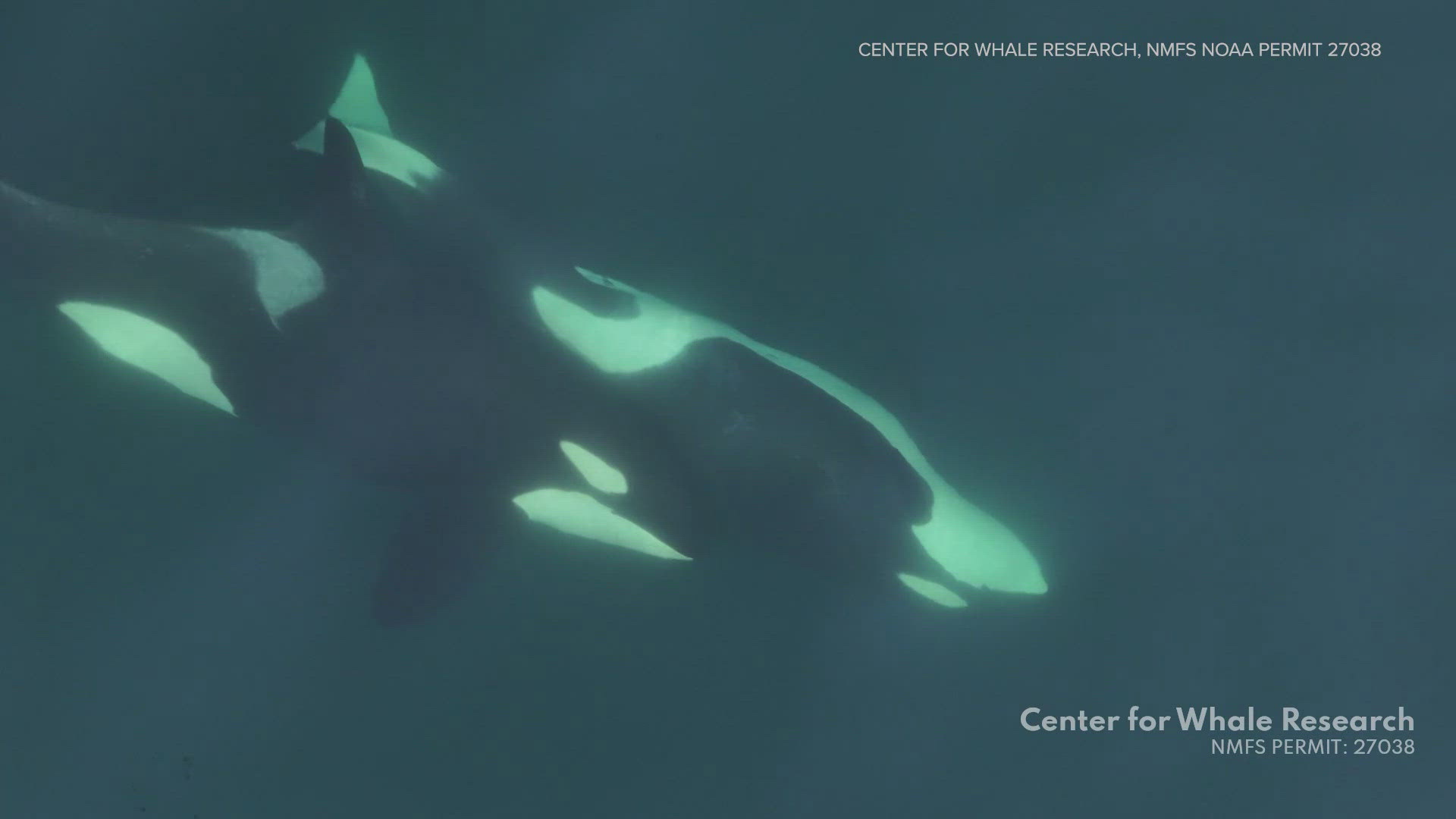FRIDAY HARBOR, Wash. — In a paper published this week, researchers shared evidence indicating Southern Resident orca whales may not only use tools, but they are fashioning them to complete a specific task.
Scientists with the Center for Whale Research in Friday Harbor observed a common behavior across all three Southern Resident pods: Whales grabbed stalks of bull kelp and used their teeth and the drag of the kelp through the water to separate a short section. The whales took the section of kelp and pinned it between their body and the bodies of another orca, then the two rubbed the piece of kelp back and forth between them.
"We think this is a form of grooming," said Dr. Michael Weiss, with the Center for Whale Research, and one of the lead authors on the paper.
In the paper published in Science Direct, the authors hypothesized that this behavior, which they've called "allokelping," is a form of "social skin maintenance," and the first example of its kind in marine mammals.
Marine mammals have been known to use tools, but manufacturing them is a step further. This behavior appears to be specific to Southern Resident orcas.
"What's interesting here is they're not just finding an object in their environment, and then picking it up and using it as a tool," Weiss said. "They're finding these complete kelp stalks in their environment, which, as they are, would not be usable for this behavior, and then actively changing it and modifying that object until it is now useful."
Weiss said this behavior is rare across all mammals, and potentially unheard of in marine mammals in particular.
This may be the first example of any kind of tool use by a wild animal that benefits more than one individual at a time. Primates are known to groom each other, but that's a one-way interaction.
"This behavior... it ends up being this mutual interaction where the two of them are simultaneously rubbing the kelp against their bodies," Weiss said. "You do need a partner to be able to do this right."
Researchers are hoping to learn much more about this behavior, including how it may impact other social interactions between whales, and if they can see tangible changes in the skin condition of the whales who engage in this behavior over time.
As researchers are learning more about this complex and innovative species, many are racing to save the group from extinction. There are 73 whales left across the J, L and K pods, and more needs to be done to bolster the whale population to ensure their continued survival.
"If we lose these whales, we're never going to get that culture and that society back on the planet," Weiss said.
At the same time, bull kelp is in trouble. The marine plant that was once abundant in the Puget Sound region has suffered steep declines.
"We need to make sure these killer whales have an environment that lets them exhibit their natural culture behaviors," Weiss said. "And that means making sure bull kelp doesn't disappear as well."

